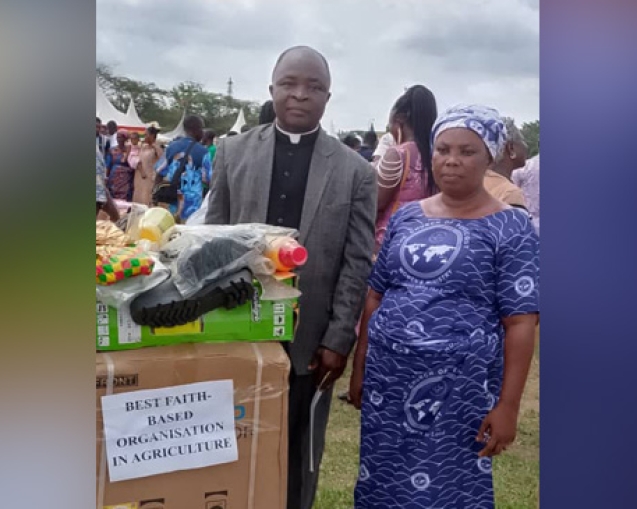Yesterday, The Church of Pentecost worldwide drew the curtains on a spiritually electrifying Pentecost Week, culminating in a 14-day journey of fervent fasting and prayer. Hearts were stirred, altars were rekindled, and the heavens felt unusually near. As the incense of intercession rose, it was more than a commemoration, it was a divine provocation for revival, a call for the winds of the Spirit to blow once more across dry bones and forgotten places. In this kairos moment, the Lord is whispering to His Church: “Even in the cemetery, My power still speaks.”
“Once while some Israelites were burying a man, suddenly they saw a band of raiders; so they threw the man’s body into Elisha’s tomb. When the body touched Elisha’s bones, the man came to life and stood up on his feet.”
— 2 Kings 13:21 (NIV)
A TOMB, A CORPSE, AND AN UNEXPECTED REVIVAL
In 2 Kings 13:21, Israel was at a low point. National chaos, moral decline, and the loss of prophetic leadership had left the land spiritually dry. It was into this backdrop that an unnamed dead man was hastily thrown into Elisha’s tomb. The moment his body made contact with Elisha’s bones, he revived and stood on his feet.
This is no mere historical oddity. It is a prophetic mirror. Elisha’s bones represent the lingering anointing, the residue of revival, and the unchanging potency of the Spirit of God. And that dead man? He represents any life, church, or generation that seems buried beneath failure, fear, and forgotten dreams until they come into contact with the true power of God.
PENTECOST: FIRE IN THE GRAVEYARD
The early church in Acts 2 was also in a kind of cemetery, locked behind closed doors, hiding in fear, waiting in uncertainty. But then came the sound of a mighty rushing wind. Tongues of fire descended, and ordinary men and women were ignited with extraordinary boldness. The same Spirit that raised Jesus from the dead (Romans 8:11) filled frail vessels and birthed a global movement.
The message? Wherever the Spirit moves, cemeteries become birthing rooms.
When the church today connects with the authentic anointing of the Holy Spirit, even the “buried” things: callings, churches, destinies etc. can rise again.
This Pentecost, we are reminded that the Holy Spirit is not limited by environment. He moves in broken homes, lukewarm churches, secular universities, and decaying communities. He turns tombs into temples and silence into songs. Just like the man who revived in Elisha’s tomb, when the Church encounters genuine Pentecostal fire, what was dead gets up again.
REVIVAL OFTEN COMES IN CRISIS
The miracle happened in the midst of a crisis—raiders were approaching. It was chaos that led to the dead man being thrown into Elisha’s tomb. Many of the greatest revivals in history have come in times of national decline, spiritual coldness, or deep adversity. Today’s global moral crisis, and societal decay may seem like raiders but they can become the backdrop for God’s greatest move.
GOD SPECIALIZES IN HOPELESS SITUATIONS
Cemeteries symbolize finality, silence, and hopelessness. But God often chooses these very places to display His resurrection power. The revival we seek is not just for the enthusiastic or spiritually vibrant; it is for the spiritually “dead”, the discouraged, and the backslidden. The Pentecost Week fast was a prophetic act declaring that the Spirit of God is ready to raise what we thought was beyond saving.
THE INGREDIENTS OF A CEMETERY REVIVAL
1. Residual Anointing – The Spirit of God doesn’t expire. Elisha was dead, but the anointing lived on. The legacies of prayer, holiness, and truth still carry power. Let’s not despise the “old bones” of sound doctrine, deep intercession, and obedience to God.
2. Divine Interruption – The miracle wasn’t planned. Raiders came, fear struck, and the burial was rushed. Yet in that chaos, God moved. Revival often comes in messy, unpredictable moments.
3. Contact with the Sacred – The miracle only happened when the dead man touched Elisha’s bones. This generation doesn’t just need sermons, they need an encounter with the living God.
4. Resurrection unto Purpose – The man didn’t just breathe, he stood up. True revival doesn’t end at restoration; it leads to recommissioning. God revives us to rise and run with purpose.
FROM DRY BONES TO DANCING FLAMES
Ezekiel saw a valley full of dry bones, and at the command of the Spirit, they lived and became a vast army (Ezekiel 37). That vision is alive today. Your marriage, ministry, local assembly, or personal walk may feel like a spiritual graveyard—but hear the word of the Lord: “I will put my Spirit in you, and you will live!” (Ezekiel 37:14).
The Church of Pentecost’s Pentecost Week may have ended, but the Pentecostal experience must continue. We are carriers of fire. We are agents of resurrection. We are called to step into spiritual cemeteries with tongues of fire and declare, “Live again!”
CONCLUSION: A NEW WIND IN THE GRAVEYARD
God is not intimidated by tombs. He doesn’t avoid dead places. He transforms them. Just as He raised Lazarus with a word and ignited the early church with fire, so is He calling the Church today to release resurrection power into every dry, dark, and desolate place.
From tombs to tongues of fire—this is the rhythm of true revival. May we rise from this Pentecost season with burning hearts and bold voices, ready to awaken the graveyards around us.
Written by Overseer Dr. Blankson Appiah Anning (Jinavore District, Sawla Area)


















